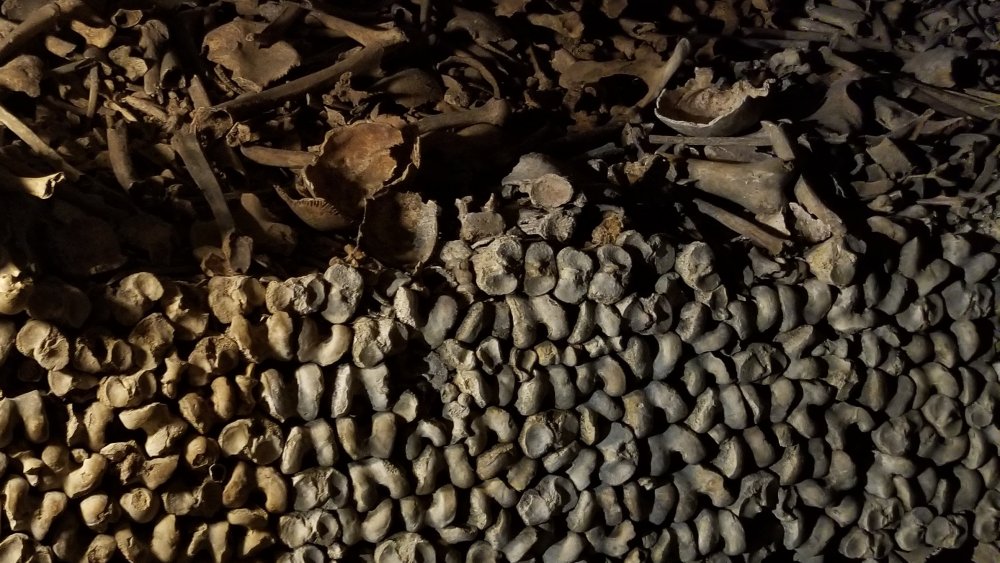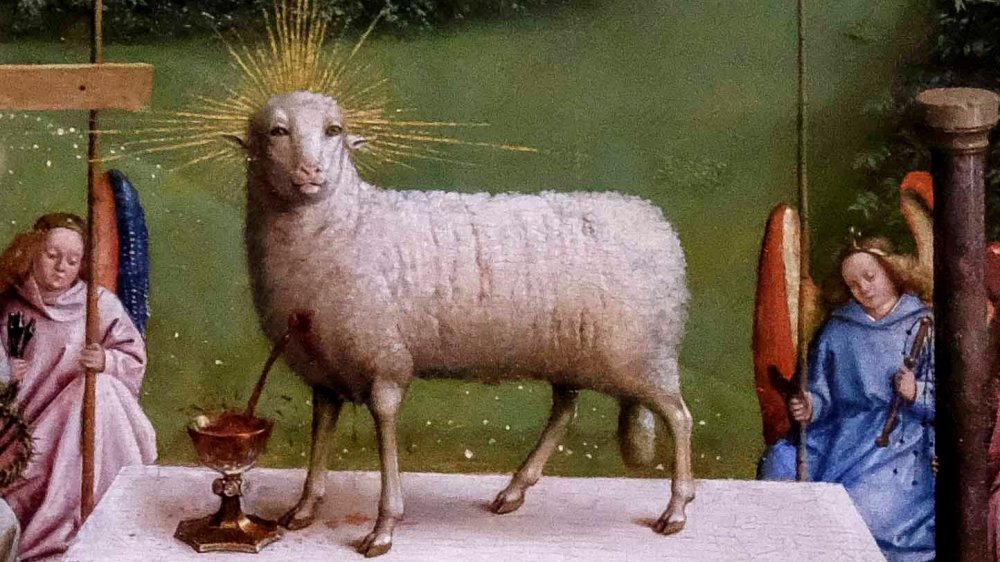Walls Built From Human Bones Discovered Under Church
In 2020, St Bavo's Cathedral in Ghent, Belgium embraced its inner haunted house. It started in January with the restoration of a 15th-century painting depicting the Lamb of God. As the BBC details, this well-known symbol of Christ scared the bejesus out of people with its "intense gaze" and "large frontal eyes," which give it a creepily human quality. Even if you managed to pry your eyes away from the lamb's alarming face, you might notice the stream of blood spurting from its chest into a cup, making that doe-eyed, thousand-yard stare look utterly bloodthirsty.
Just when it seemed like a crazy-eyed lamb gushing blood into a cup was the most haunting thing the cathedral could muster, the ground around St Bavo's told the blood cup to hold its beer. Per Live Science, archaeologists were performing excavations in preparation for the construction of a visitor's center when they unearthed nine walls constructed from human bones. That kind of surprise might put the fear of the Lamb of God into the sturdiest hearts. But the studious minds of those archaeologists were more interested in sucking out the marrow of history. Luckily, those old bones told an interesting story.
All in all, you're just another bone in the wall
Live Science calls the walls "a one-of-a-kind find." Really, they're nine of a kind, but who's counting? The typical old-timey Belgian graveyard was comprised of a large pit or "layers of loose human bones." Archaeologist and excavation leader Janiek De Gryse said, "We have never seen structures, like walls, which are intentionally built with human bones." These grim structures were probably assembled in the 17th or early 18th century. However, radiocarbon dating indicates that the bones themselves come from the second half of the 15th century.
So who embarked on this ghoulish construction project. Was someone building a bone shrine for the wild-eyed Lamb of God? Was St Bavos in need of an exorcist? Nope. The graveyard got too full, and the older bones had to make way for the new blood. So the old bones became morbid bricks in a series of terrifying walls. The walls might have been a rush job because the builder(s) left out more fragile fragments of skeleton like vertebrae and ribs, instead relying mostly on leg bones and skull chunks. But no matter how painstakingly it was built, there was always going to be a bone to pick.

